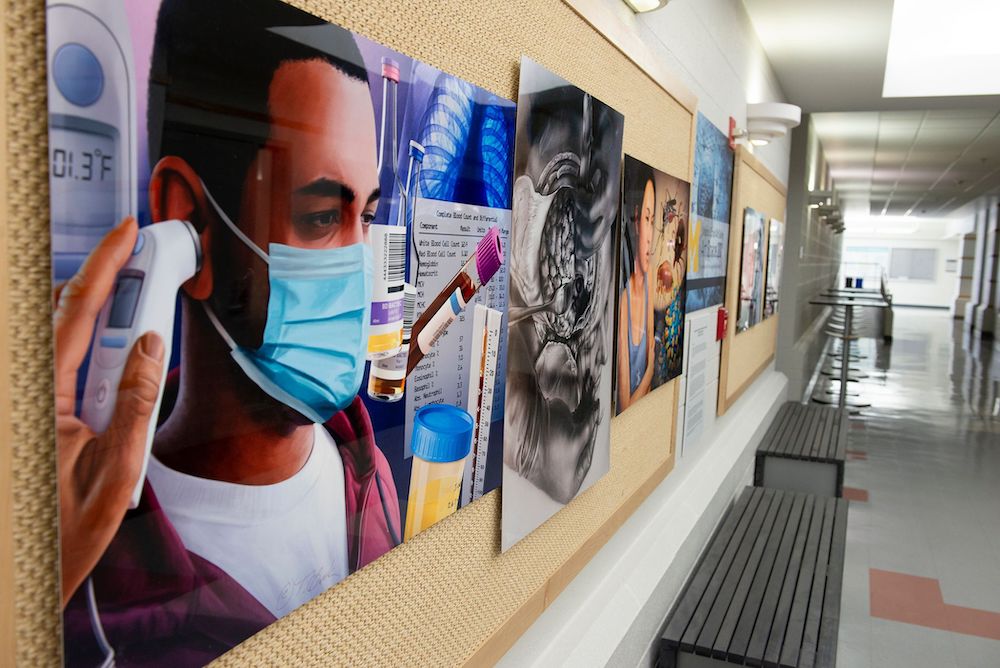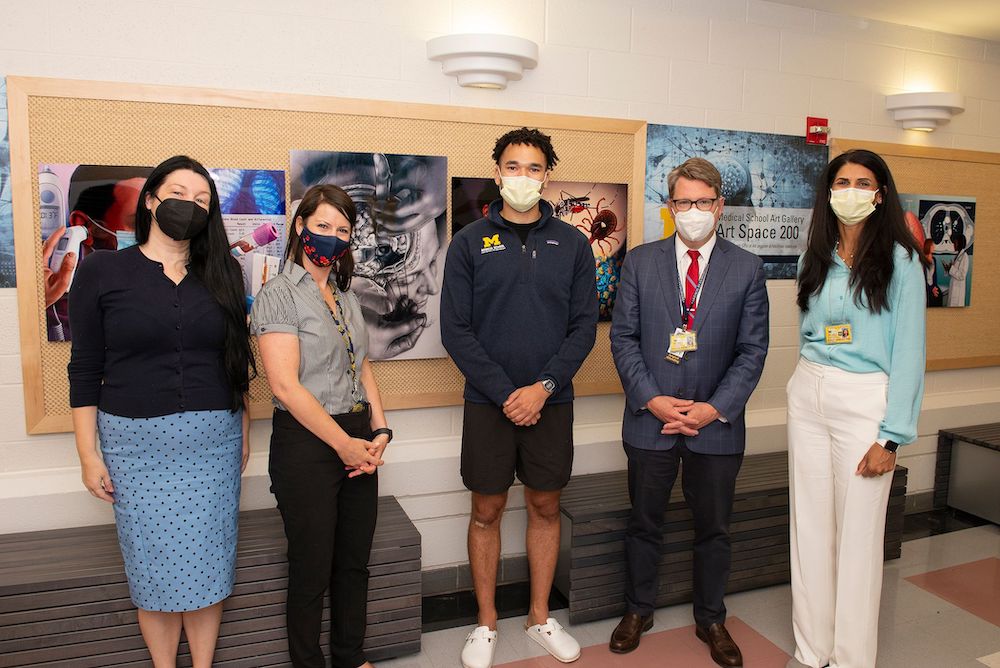
If medical education materials provide an incomplete view of patients, how will physicians effectively treat the wide range of patients they will ultimately see?
Gurjit Sandhu, Ph.D., and Julie Evans discussed that conundrum after reading a piece about how the “bullseye sign” associated with Lyme disease doesn’t present the same way on patients with dark skin – and isn’t shown on dark skin in medical education materials.
Sandhu, associate professor of surgery & learning health sciences, and Evans, wellness programming and research associate, frequently look for opportunities to integrate DEI principles into their programs. Their work with the Doctors of Tomorrow program, which works with Detroit area high school students from underrepresented communities to help them pursue careers in healthcare, is a frequent reminder of how representation matters in medicine.
It also matters when it comes to research.
“We find in our work that it’s a huge inhibitor if we don't have the diversity we want among faculty and trainees. We’re inhibited in collecting data and making informed decisions about it,” Evans said.
One way to increase representation is to intentionally display it, which the group has done through an exhibit of medical illustrations in the Medical Science 1 Building of the medical school.
“Space matters and what you put on the walls is important and educational. These two things converged for us,” Sandhu said.
Evans led the charge to identify illustrators and their work and was intrigued by Marsha Jessup’s work on the Association of Medical Illustrators’ website. Evans reached out and learned that Jessup had an unexpected connection: She studied her craft at the University of Michigan through the Graduate Program of Medical and Biological Illustration. (The program was established in 1964 and folded into the Art Department in 2004, where it is now offered as an MFA degree program.) Jessup broke barriers along the way in her professional journey; she was the first woman of color to be the Association of Medical Illustrators (AMI) President and the first to be the AMI Board Chair.
Jessup had both illustrations and connections to share and soon Evans had two more illustrators—Todd Buck and Jill Gregory—on board. The Michigan connections also deepened: Gregory studied at U-M as well. The artists’ generosity resulted in more images than can be physically displayed in the space.

Second-year medical student Dawson Hill, the Mentorship Director for Doctors of Tomorrow, worked with a committee of medical students invested in representation and inclusion to select which images to display in the hall. What resulted was a visual timeline through the lens of healthcare exposure centered on people of color. The vivid images show a range of care from pituitary tumor operations to vitals being taken.
All of the images are available in a digital exhibit.
"We wanted to focus on the journey through the healthcare system and each member of the focus group had a different interpretation of that prompt. The common threads in choosing the images included diverse representation of race and ethnicity of patients and providers, in addition to diversity of age, religious backgrounds, and the different types of clinical scenarios ranging from chronic disease to acute emergencies,” Hill said.
In addition to including diverse representation, Hill said it was important to the group that single images could tell believable stories about the patients.
Passersby stopped to view the images on a recent day in July shortly after the display had been revealed. Students attempted to identify structures in the brain of one image—appropriate since the images are outside of the anatomy lab. A faculty member enthusiastically pointed at an image and said the pituitary gland was her surgical territory.
Evans is hopeful the display’s location means that faculty and staff are exposed to it as well.
“It’s in a transitional space on campus, so people who park in a nearby structure use that hallway to go to the hospital. I hope all the employees who take that route every day are inspired by the images,” she said.
The images will be on display through September 2023.

##
By Colleen Stone
Contact Us
Connect with the Department of Surgery to share your ideas or get in touch.
Department of Surgery
2101 Taubman Center
1500 E. Medical Center Dr.
Ann Arbor, MI 48109
Email: [email protected]
Twitter: @UMichSurgery
